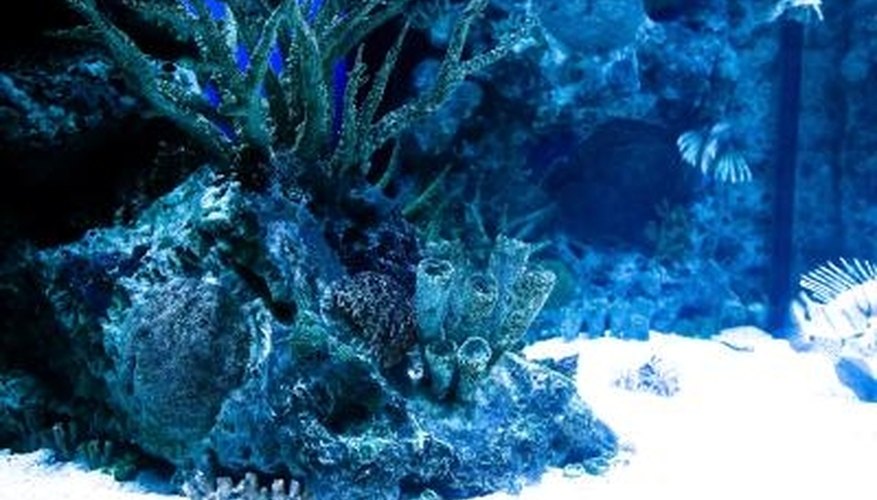
The janitor fish, also known as the sailfin catfish, is an invasive species of catfish native to South America's Amazon River basin. This type of fish damages banks building nests, causing erosion, and competes with the local fish for food. Though janitor fish are known more as scavengers than predators, they do eat some small local fish and eggs. Since it has established itself as an exotic pest in many areas, alternative uses have been proposed for the fish..
Algae Eaters
The janitor fish's diet of algae, plants and carrion cause them to widely sold as aquarium algae eaters. Most eventually grow too large for the aquarium, as they can exceed two feet in their natural habitat, and they release a large amount of waste that can pollute the water. While smaller ones are still sold for aquariums, another use has surfaced in areas with high foreclosure rates that have pools. According to the Palm Beach Post, city officials in areas like Wellington, Fla., are placing janitor fish in stagnant swimming pools outside vacant houses as a low cost way to clean the pools.
Biofuel
A student in the Philippines looking for a way to use the janitor fish for chicken feed discovered a way to use them to develop bio-fuel. He entered his project in the Intel International Science and Engineering Fair, winning the third grand prize. His experiments showed useful ways to rid the Philippines of the invasive fish that was interfering with the livelihood of fishermen by using them to make an additive for diesel fuel that would lower the price of petroleum.
Food
According to Dr. Jonathan Armbruster, curator of fishes at Auburn University, janitor fish are edible if they don't contain high levels of mercury or other metals. Though they're not sold as a food fish, people in the areas of South America where they are native gut, grill them whole and eat them or use them in soup. In areas without refrigeration, janitor catfish can be kept alive for up to 30 hours by moistening them, making them a good source of fresh food. Many fisherman use grilled janitor fish as an appetizer with their drinks.
Agriculture and Production
The Southeast Asian Regional Center for Graduate Study and Research in Agriculture started a program designed to rid wetland areas of janitor fish by using them to make livestock feed. Fisherman are paid to catch the janitor fish for processing into fish meal that will be used as an ingredient in fish, livestock or animal food. They can also be used as a liquid fertilizer. The thick skin of janitor fish, particularly the exoskeleton of the belly area, can be tanned into fish leather and use to craft items such as wallets and purses.
References
- Southeast Asian Regional Center for Graduate Study and Research in Agriculture: Benefiting from the Dreaded Janitor Fish
- Palm Beach Post: Wellington Taps Algae Eating Janitor Fish to Clean Abandoned Pools
- Asian Journal: Boy Wonder: 17-yr old wins int'l award for and discovering new source of fuel
- Manila Bulletin: New Use for Janitor Fish: Bones as Water Purifier?
- Absolute Astronomy: Pterygoplichthys
Writer Bio
Cathryn Whitehead graduated from the University of Michigan in 1987. She has published numerous articles for various websites. Her poems have been published in several anthologies and on Poetry.com. Whitehead has done extensive research on health conditions and has a background in education, household management, music and child development.



